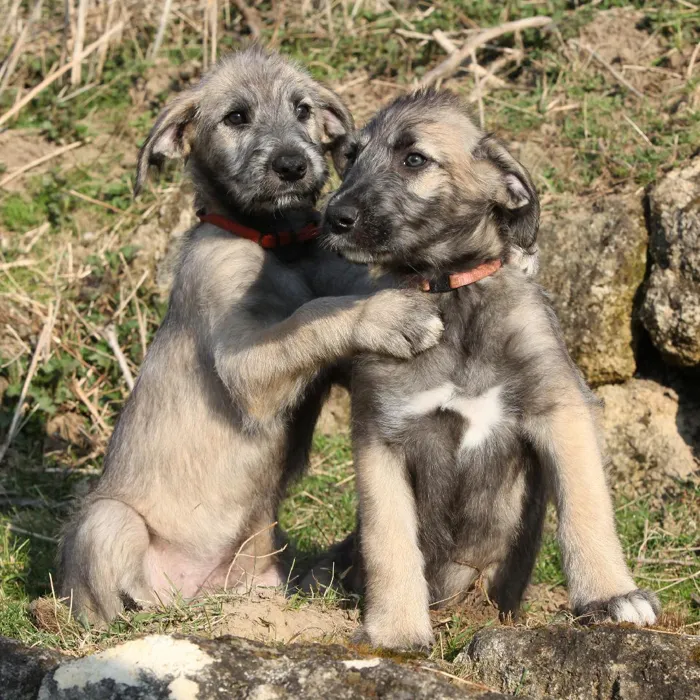Irish Wolfhound

The calm, dignified, and kindly Irish Wolfhound is the tallest of all AKC breeds. Once fearless big-game hunters capable of dispatching a wolf in single combat, Wolfhounds today are the most serene and agreeable of companions.

Ask About Irish Wolfhound ?
Breed Traits
Group
Hound
Temperament
About
History
Standard
Nutrition
Grooming
Exercise
Training
Health
General Appearance
Of great size and commanding appearance, the Irish Wolfhound is remarkable in combining power and swiftness with keen sight. The largest and tallest of the galloping hounds, in general type he is a rough-coated, Greyhound-like breed; very muscular, strong though gracefully built; movements easy and active; head and neck carried high, the tail carried with an upward sweep with a slight curve towards the extremity. The minimum height and weight of dogs should be 32 inches and 120 pounds; of bitches, 30 inches and 105 pounds; these to apply only to hounds over 18 months of age. Anything below this should be debarred from competition. Great size, including height at shoulder and proportionate length of body, is the desideratum to be aimed at, and it is desired to firmly establish a race that shall average from 32 to 34 inches in dogs, showing the requisite power, activity, courage and symmetry.
Head
Neck, Topline, Body
Forequarters
Hindquarters
Feet
Coat
Color and Markings
Faults
All pets have found there homes! Sign up to be notified when new pets are added so you don't miss out.


